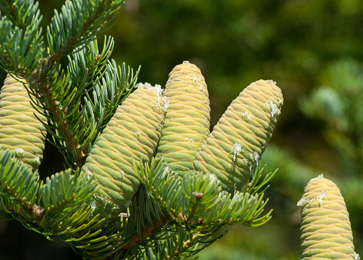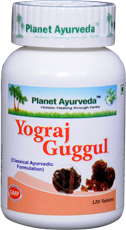Talisa Patra (Abies Webbiana)

DESCRIPTION OF THE TALISA PATRA
Talisa patra known as Indian silver fir. Abies Webbiana is the scientific name of the talisa patra. It belongs to Pinaceae family. Pinaceae family is recognized as the pine family of conifers. These are native of northern temperate regions.
Talisa patra is a tall evergreen tree with strong branches spread horizontally. It can be grown up to 60 m. the bark of the plant is rough and of brown color. The young shoots are covered with small, short and brown hairs. The leaves are single, thin, flat, linear and spirally arranged all around the small branches. These are 1 to 3 inches long and 2mm broad. The upper part of the leaves are very shining and of dark green in color. There is a midrib in the upper surface and traject downs the middle with two faint lines present on either side of the midrib beneath. Seeds of the plant are of winged type. The petiole of the plant is very short and of greyish brown color. The flowers are of monoecious type but the both sexes, male and females can be there on the same plant. The fruits of the talisa patra are of round or rectangular shape, grows 2 to 4 inches and the color of the cones are dark purple after ripe. This plant has odour like terebinthine with astringent taste.
GENERAL DESCRIPTION
Talisa patra or Abies Webbiana is an ayurvedic medicinal plant. It is known with more other different names in different regions according to their leaves properties such as Cinnamomum Tamal in north region, Taxus Baccata in the regions of Maharashtra, Uttar Pradesh and Gujrat, Rhododendron Anthopogen in the regions of Punjab and Nepal.
Abies genus contain one very similar kind of species, show resemblance with Abies Webbiana. This is Abies Pindrow. The difference is that there young shoots are without hair with small and more fatty fruits.
This plant helps to balance kapha and vata. In Ayurveda, leaves of the plant are responsible to cure swasa (chronic obstructive pulmonary diseases), gulma (tumor), hikka (hiccups), kasa (cough), krimi (helminthiasis), chhardi ( vomiting), mukharoga (mouth disorders) amadosha and amoebiasis. This plant exhibits various properties like anti-inflammatory, antifertility, febrifuge, central nervous system depressant property, antibacterial, antifungal, antitumor, antispasmodic, antitussive, mast cell stabilizing and anxiolytic properties. Talisa patra is also effective against diseases like rheumatism, hyperglycemia and conception.
Talisa patra consists of good range of phytochemicals. It contains components like abiestin, bioflavonoid, bita-sitosterol, n-triacontanol and two glycosides: betuloside and methylbetuloside. It also contains essential oils which contain majorly alpha-pinene, beta-pinene, limonene, carvone, monoterpenes, camphene and bornyl acetate. Some other chemical constituents are also present. These are steroids, tannins, saponins, amino acids, phytosterols, alkaloids like 1-(4′-methoxyphenyl)-aziridine, lipids and biflavonoid etc.
CLASSIFICATION
- Kingdom – Plantae
- Sub-Kingdom – Viridiplantae
- Infra Kingdom – Streptophyta
- Super Divison – Embryophyta
- Divison – Tracheophyta
- Sub Divison – Spermatophytina
- Class – Pinopsida
- Subclass – Pinidae
- Order – Pinales
- Family – Pinaceae
- Genus – Abies
- Species – Webbiana
HABITAT
It is widely present on the higher ranges of Himalayas up to 2800 to 10000 feet. Regions where talisa patra grows are Assam, Nepal, Bengal and Kashmir.
NAMES OF THE TALISA PATRA
- Sanskrit Name – Thalispatra, Thalees, Dhaatriparni, Shukodara.
- English Name – Himalayan Silver Fir, Talispatra
- Hindi Name – Thaleesa Patra, Talispatra
- Bengali Name – Talispatra, Tallish Pala
- Malayalam Name – Thaleesapathram
- Kannada Name – Tales Patra, Talisapathra, Shukodara
- Assamese Name – Talish
- Unani Name – Talisapattar
- Marathi Name – Laghu Taleespatra
- Telugu Name – Taleesapatri
- Nepali Name – Gobray Salla
- Urdu Name – Zarnab
- Tamil Name – Talispatra, Taleesapatri
- Oriya Name – Talis
- Gujrati Name – Tallish Patra
- Bhutia Name – Dunshing
- Folk Name – Badar, Morinda, Raisalla, Talispatra, Chilrow
AYURVEDIC PROPERTIES
| Hindi / Sanskrit | English | ||
| Rasa | Madhura, Tikta | Taste | Sweet, Bitter |
| Guna | Laghu, Teekshna | Physical Property | Light, Piercing |
| Virya | Ushna | Potency | Hot |
| Vipaka | Katu | Metabolic Property (After Digestion) | Pungent |
EFFECTS ON DOSHAS
It helps to balances vata and kapha.
CLASSICAL CATEGORIZATION
| Charaka Samhita | Sushrut Samhita |
|
– |
Shiroveryachangan |
ANCIENT VERSE ABOUT TALISA PATRA

The Bhavprakash nighantu edition of 1998: verse 114, page no- 255 to 257.
It states the names and the properties of talisa patra. It is known with talis, Patradhya and Dhatri patra.
It is light, piercing and hot in potency. It is useful for body heat, asthma, kapha and vata diseases, anorexia, abdominal distension, low digestive fire, endotoxins and tuberculosis.
REFERENCES
The Bhavprakash nighantu with elaborated Hindi commentary by Padmashri prof. K.C. Chunekar, edited by Dr. G.S. Pandey: Edition of 1998, verse – 114, page no. 255 to 257.
PRACTICAL USES OF TALISA PATRA
- Talisa patra acts as febrifuge, central nervous system depressant, antibacterial, antifungal, antitumor, antispasmodic, antitussive, female antifertility, mast cell stabilizing, anxiolytic, anti-inflammatory, antifertility, febrifuge, central nervous system depressant property and antibacterial agent.
- Talisa patra leaves helps to give relief from cold, sneezing, nasal congestion and watery discharge.
- The leaves of the plant contain antitussive, anti-inflammatory and mucolytic properties so helps to clear airways and dissolve thick mucus present in the lungs. It also reduces mucus production. So overall, helps to reduce asthma and bronchitis.
- It has property of broncho-dialation, so helps to ease in breathing.
- It reduces the stress due to asthma and cough.
- The leaves of the flower help to increase appetite.
- This gives relief from spasm of involuntary muscles.
- It reduces inflammation and fever.
- It helps to remove toxins from the body.
- It is used to treat rheumatism.
- It is used as cardiac tonic also.
- It gives relief in vomiting.
- It is also very useful to treat dental problems.
PARTS USED
- Leaves
DOSAGE
- One to two grams.
THINGS TO BE KEPT IN MIND
- Its excess or overdose can cause mouth ulcers, heartburn, stomach irritation and vertigo.
- It should be used under medical supervision during pregnancy and lactation.
AYURVEDIC PRODUCTS FROM TALISA PATRA
YOGRAJ GUGGUL
Planet Ayurveda has this herbal formulation that contain talisa patra as one of its herb.
This formulation helps to maintain all three doshas. It is helpful to balance digestion and metabolism. It is very useful in muscle and joints pains. This is prepared in fully natural way.




